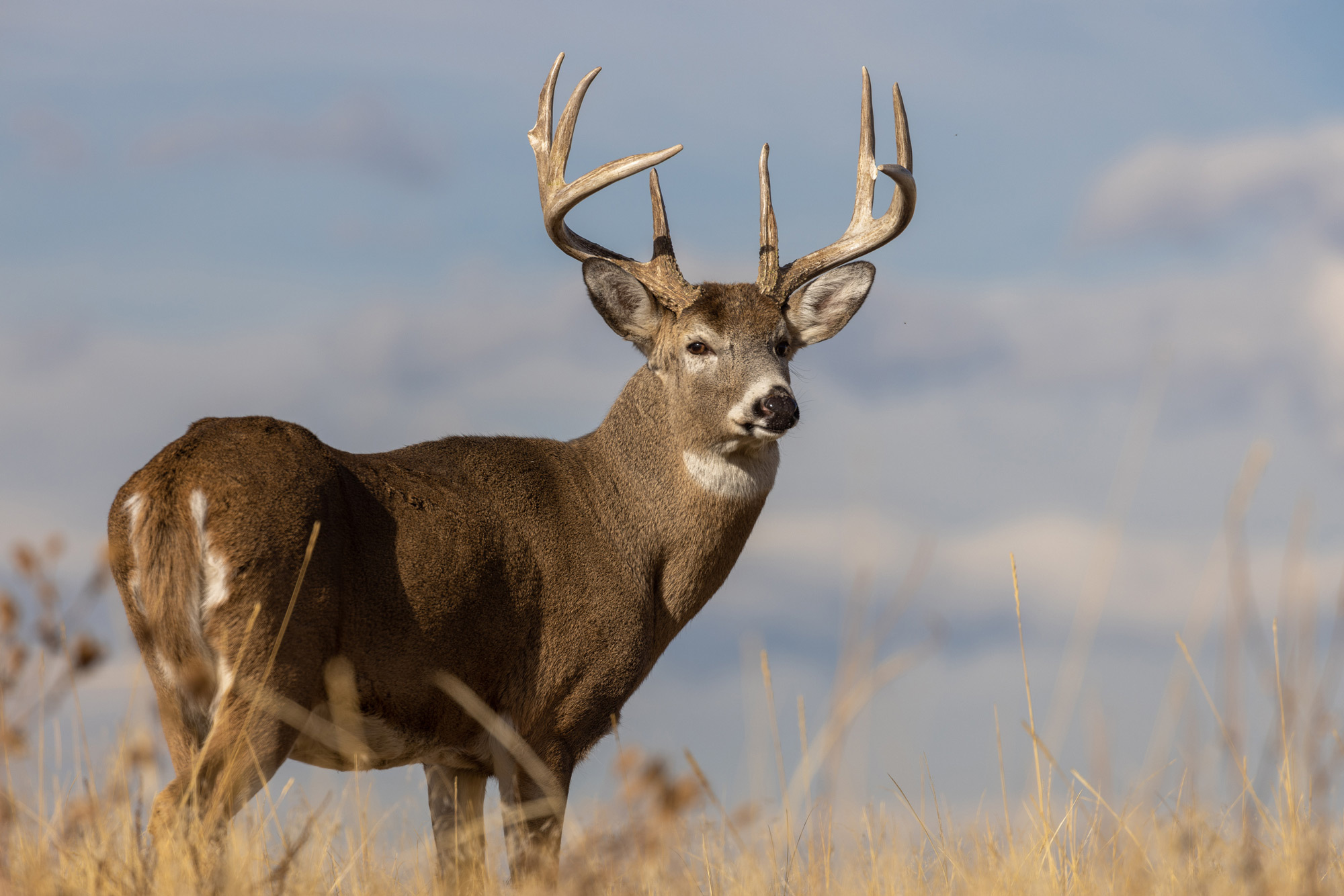Venison
Alberta is home to both mule deer and white-tailed deer. Both species are a popular hunting target, prized for their lean and delicious meat.
High in protein, it's similar in flavour to grass-fed bison or beef, and when prepared correctly, it is a delicious and healthy alternative to farm-raised meat.

About Venison
Mule deer are widely distributed across the province and can be found in many habitats, though most commonly in the mountains and boreal forests. They thrive on a diet of shoots, buds, and other vegetation, and may occasionally eat lichen to supplement their diet in the colder months. Mature bucks can reach 450lbs, and the largest mule deer ever harvested was in Alberta - a record that has stood now for more than 80 years.
White-tailed deer thrive in the prairies and grasslands across the province. While the smaller of the two species, Albertan white-tailed deer are the largest of their species, and a mature buck can still reach 300 lbs! Their diet includes grasses, woody plants, berries, and mushrooms, although they are voracious eaters and can often be problematic for the gardens and flower-beds of rural-dwelling Albertans.
Food Safety
While there are some local producers, deer is primarily harvested via hunting. Meat must be processed and stored quickly, typically by freezing, and the animal's overall health should be thoroughly assessed prior to consuming any part of it.
Deer in Alberta are also occasionally found to have CWD - Chronic Wasting Disease - which is a transmissible and lethal neurological prion disease. The province regularly tests both wild and farmed populations to ensure the number of ungulates who carry this disease is low, and while there are no restrictions on consuming meat from a deer that tested positive, the World Health Organization strongly recommends against it.
History
Deer have been a vital animal for Indigenous nations in Alberta for thousands of years. They were both hunted and trapped, and in doing so they provided food, medicine, regalia, and clothing.
With the arrival of European immigrants, deer continued to be an important food source to get through long seasons of cold, and to this day they remain one of the most popular hunted species in the province.
Ways To Cook
Like any game species, there is great diversity in how deer meat can be prepared. Once butchered, each component has characteristics that make it better for different styles of preparation. For example, the backstrap is better suited for marinating and grilling, the leg produces excellent tenderloin and steaks, while the shank is great for ground venison, stewing, or making jerky.
Some Of Our Favourite Videos
Alberta Venison Producers
Rocky Mountain Game Meats
About this producerFoods from this producer:
-
- Domesticated
- Fur
Beef
-
- Domesticated
- Feather
Chicken
-
- Domesticated
- Fur
Lamb
-
- Domesticated
- Fur
Pork
-
- Wild Game
- Fur
Bison
-
- Wild Game
- Fur
Venison
-
- Wild Game
- Fur
Wild Boar
-
- Wild Game
- Fur
Pronghorn
-
- Wild Game
- Fur
Rabbit
-
- Wild Game
- Feather
Duck
-
- Wild Game
- Feather
Partridge
-
- Wild Game
- Feather
Pheasant
-
- Domesticated
- Feather
Quail
Rangeland Canadian Bison & Elk
About this producerFoods from this producer:
